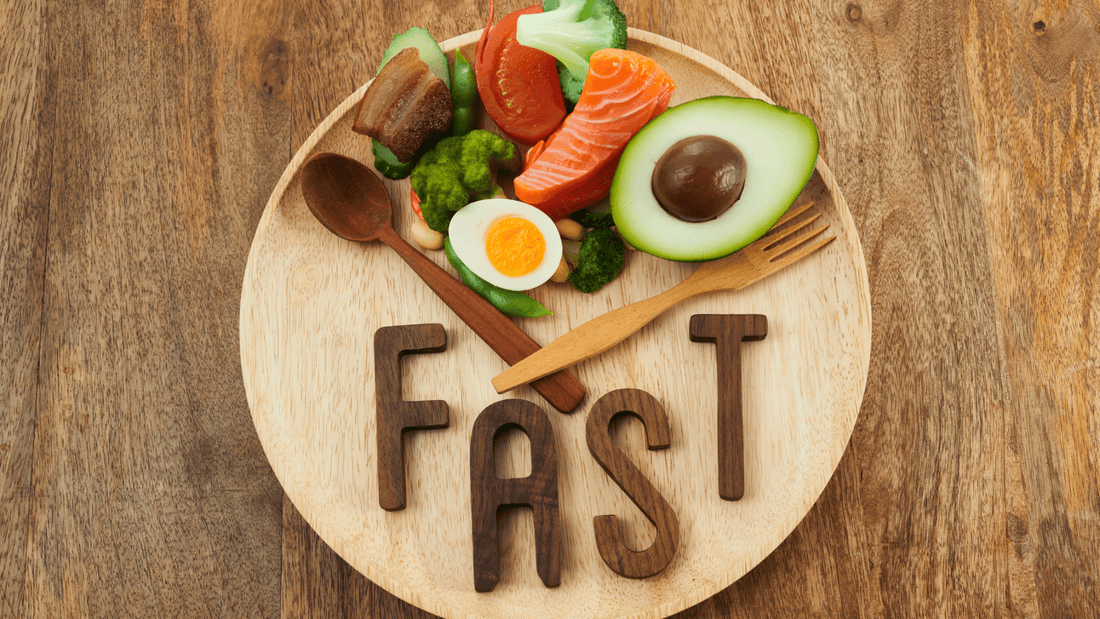
Fasting for Women: What You Need to Know Before You Skip Your Next Meal
Aria PalcichShare
Fasting has become one of the most talked-about tools for weight loss, hormone balance, and metabolic health. But here’s the truth: what works for men doesn’t always work the same way for women.
If you’ve tried intermittent fasting and felt exhausted, irritable, or like your hormones were off—it’s not in your head. Women’s bodies are more hormonally complex and more sensitive to changes in food intake. The good news? You can fast effectively—but it has to be done differently.
Let’s break it down.
Why Fasting Works Differently for Women
Women’s bodies are wired for reproduction, and that means hormone balance is a top priority. When you go too long without food—especially under stress—your body sees it as a threat, raising cortisol levels and potentially disrupting thyroid function, mood, and your cycle. While men may thrive on longer fasts and lower calorie intake, women often need a more nuanced approach.
3 Smart Tips for Women Who Want to Fast
💡 Tip #1: Don’t Fast on Stressful Days
Fasting is a physical stressor. Add in a tough workout, poor sleep, or a chaotic day at work, and you’re asking your body to push through too much. On high-stress days, skipping meals may do more harm than good. Instead, fuel your body with clean, balanced meals—free of sugar, junk oils, and hidden ingredients. This helps stabilize blood sugar, lower cortisol, and keep your metabolism on track without pushing your system over the edge.
🍳 Tip #2: Focus on Nutrient Density, Not Just Your Fasting Window
Fasting isn’t just about when you eat—it’s what you eat when you do. Women need enough nutrients to support hormones, muscle, and energy. Whether you’re fasting for 12 or 16 hours, breaking your fast with the right foods is essential. That means high-protein, lower-carb meals with healthy fats and fibre to keep your blood sugar steady and cravings in check. Our meals at Clean Cravings Kitchen are designed to do exactly that—so you can nourish your body and still reach your goals.
🕒 Tip #3: Sync Fasting with Your Cycle (Even in Menopause)
If you’re still cycling, your body handles fasting differently throughout the month. During the follicular phase (the first half of your cycle), your body is more resilient, and longer fasts are usually well-tolerated. But in the luteal phase (the second half), your body needs more nourishment. Shorter fasts—or none at all—may feel better. And if you’re in menopause? Fasting can be steadier, but gentle is best. Stick to 12–16 hour fasts, stay hydrated, and don’t skimp on protein. Your body is more sensitive to cortisol and insulin shifts, so consistency and calm matter more than extremes.
Break Your Fast with Real Food That Works With Your Body
No matter how long your fast is, how you break it matters most. That’s where we come in. At Clean Cravings Kitchen, we make meals that are:
-
🥩 High in protein
-
🥦 Low in sugar and refined carbs
-
🍳 Crafted with only clean, whole ingredients
Whether you’re new to fasting or trying to make it work for your hormones, our meals help you feel nourished, satisfied, and balanced—without the stress.
Whole foods. Smart fasting. Real results.
Explore our meals today and make fasting work for you.
